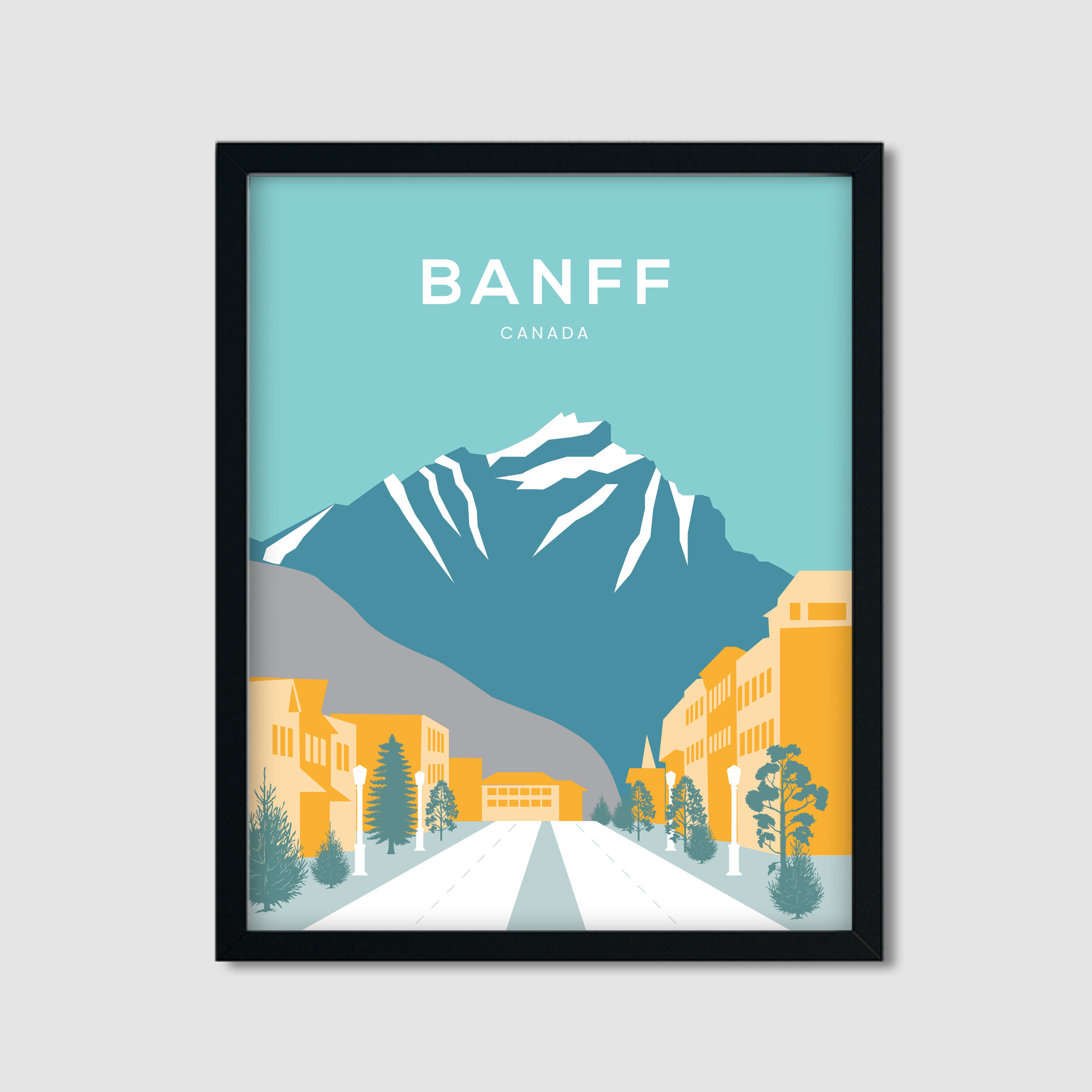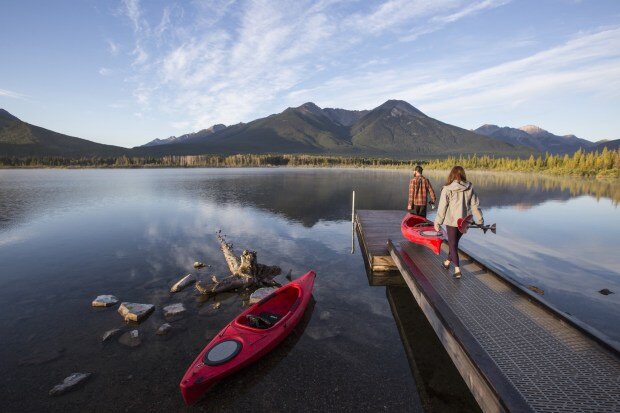BEST SPOTS FOR PADDLING IN BANFF NATIONAL PARK
By Meghan J. Ward
You can’t get a more Canadian destination than Banff, and you can’t get a more Canadian activity than canoeing. So, we figured there’s no better tribute than to pair these two together! Whether the canoe is your chosen mode of water transport, or you’re keen on using a SUP, kayak, rowboat or raft, here’s our guide to some of the best places to paddle.
If Banff had a barometer for when summer has officially kicked off, it would be the colour of the lakes and rivers that makes this national park so famous. Once the silt of springtime runoff has cleared, the lakes around these parts turn an insanely gorgeous hue of turquoise blue, and their clarity just begs boaters to dip in a paddle.
Whether you’re going old-school in a canoe or kayak or cruising along on a SUP or inflatable raft, here are some of our favourite places to get on the water in Banff National Park.
CLOSE TO TOWN
If you’re looking to cut down on driving time and hit the water sooner, you’ve got some of Banff’s most accessible and scenic lakes within a 20-minute drive.
Lake Minnewanka
Banff National Park’s biggest lake allows you to paddle for miles and enjoy breathtaking views of Mt. Aylmer, Mt. Inglismaldie and Cascade Mountain as you float. This lake can be windy, so be mindful when the water gets choppy.
Two Jack Lake
Another scenic lake found along the Lake Minnewanka Scenic Drive is Two Jack Lake. This popular spot has drive-in access, making it easy to transfer your boat from car to water. We recommend exploring the quiet southeastern shoreline of the lake, opposite the campground.
Johnson Lake
Banff’s favourite (and only) beach is found at Johnson Lake, one of the area’s most popular recreational sites. Here you can go for a paddle, relax on the beach and hike the Johnson Lake trail – all before you crack open your midday picnic.
*Please check in with Parks Canada’s Important Bulletins, as Johnson Lake has been undergoing fisheries management during the 2017 spring/summer seasons.
Vermilion Lakes
For those quintessential views of Mt. Rundle, head on over to Vermilion Lakes, where you have your choice of three bodies of water to paddle. When river levels are high you can access Vermilion Lakes via Forty Mile Creek (put in at the Banff Canoe Club docks).
Kayaking at Vermilion Lakes. Photo courtesy Noel Hendrickson/Banff Lake Louise Tourism.
VENTURING FURTHER
While the icons, such as Lake Louise and Moraine Lake, certainly offer memorable canoeing experiences, if you’re looking for off-the-beaten-track options for paddling, there’s no one stopping you from lugging your chosen vessel to the lakes along Banff’s Icefields Parkway.
Herbert Lake
Herbert Lake is a small lake – your first stop on the Icefields Parkway as you leave Lake Louise – but it is certainly less busy than Banff’s more famous lakes. Catch it while it’s calm for the perfect reflection of Mt. Temple.
Hector Lake
Hector Lake requires a bit of a portage, but you’ll likely have this lake (and its phenomenal views of the Waputik Range) all to yourself. Access requires a crossing of the Bow River, so it’s best done when water levels are lower (later in the summer).
Bow Lake
Banff’s third largest lake also happens to be amongst its most photogenic, and it’s a great place to put in a paddle. Like other large lakes in the area, watch for strong winds that build up choppy waters rather quickly.
Waterfowl Lakes
Venture a bit further up the Icefields Parkway and you’ll come across the milky green-blue water of Waterfowl Lakes, which sits in a spectacular location at the base of Mt. Chephren. A campground is located nearby, so you can stay overnight rather than venturing back down the parkway.
Canoeing on Bow Lake. Photo courtesy Noel Hendrickson/Banff Lake Louise Tourism.
FLOATING THE BOW
One can’t forget the steady stream that connects many of these mountain lakes – the Bow River. This stunning waterway is one of the most accessible and beautiful ways of seeing Banff National Park. While you can put in at many points along the river’s course, note that some sections may require more advanced navigation and paddling know-how.
No matter your skill level, one of the best plays to get on the Bow is right at the canoe docks at the corner of Bow Avenue and Wolf Street. Enjoy the convenience of canoe and kayak rentals with the Banff Canoe Club, where you can also pair your boat rental with a bike rental or hop on board a guided Big Canoe ride. Tours run throughout the day, require no paddling experience, and are a great option for families. One of the best-kept secrets?
One of the best-kept secrets? When water levels are high, you can make your way up the Bow River through the snaking waterways of Forty Mile Creek to Vermilion Lakes. These serene lakes surrounded by mountain views offer some of the best wildlife sightings and bird watching in the region. Bring your favourite snacks along for a floating picnic in your boat!
Paddling on the serene Vermilion Lakes. Photo by Dan Evans, courtesy Banff Canoe Club.
TIPS BEFORE YOU GO
*Check in with Parks Canada’s Important Bulletins, Seasonal Closures and Paddling information for any details that may impact your chosen activity.
*Follow all safety precautions, including wearing a lifejacket at all times on the water.
*To avoid the spread of disease and invasive species, clean, drain and dry your boat prior to putting it into another body of water.
Brought to you by:







